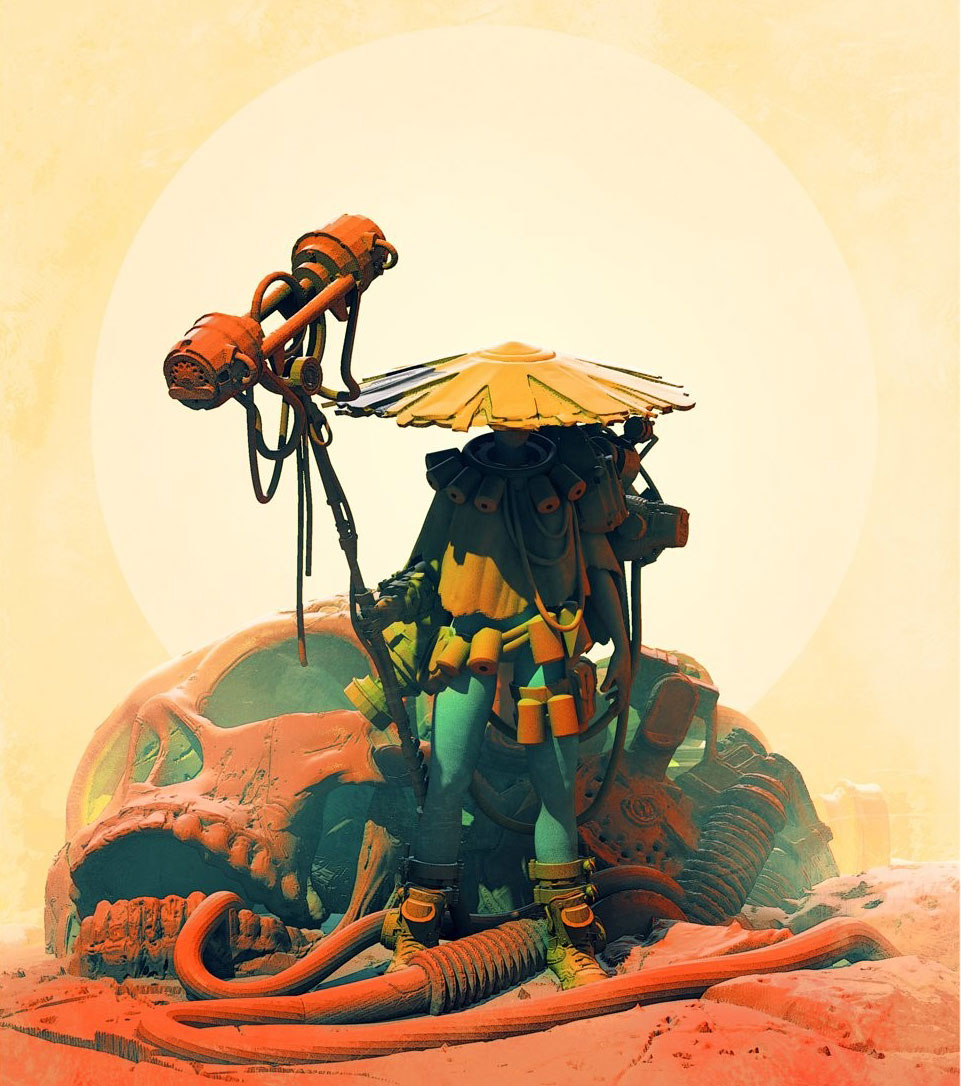With a richly mesmerizing style of illustration reminiscent of science fiction’s artful past, the work of Pascal Blanche brings character, color, light and environment together, transporting you into beautiful worlds you just want more of. He masterfully grabs gradients of color, wrapping in shadows and texture to bring the form to life, using KeyShot to make it happen from framing the work and dialing in the lighting to rendering the scene. We couldn’t wait to find out more from Pascal about his career and creating these wonderful illustrations.
What sparked your interest in becoming a 3D Concept Artist?
I always had more of a thing for volume and sculpture than drawing. When I was kid I create my own puppets and painted figurines. So 3D came as a natural tool for me.
What was the turning point in your career?
On the daily, professional side, certainly my move to Canada and the opportunity to join Ubisoft’s Montreal studio. I first became Art Director on Myst IV: Revelation, then continued with Naruto: Rise of a Ninja and James Cameron’s AVATAR. There have been many different projects, different challenges, and always the support of my studio. I like working within a team because there is always something new to learn. On the personal side, my work started to become popular at a time when small communities where just starting to build up around the first forums: Raph.com, 3Dluvr.com, Polycount, CGTalk, and later on Artstation.
 What is unique about your approach to a project?
What is unique about your approach to a project?
I tend to focus more on the story and the composition than the design itself. I try to let my characters do what they need to do–tell a story or convey an emotion about a bit of their world. This comes from my love for old practical effect movies, like the stop motion creatures of Ray Harryhausen and Phil Tippett. In my head there is this little place I call the “Derelict Planet” where all kind of aliens, monsters, female warriors, and techno sorcerers coexist.
What is your primary 3D modeling software?
I always start with 3ds Max–a force of habit. I started using the software in 1994 when it was still running on DOS (then called 3D Studio 4). After building the foundation in 3ds Max, I export everything to ZBrush to add all the details and touch-ups. It’s very easy at this point to rethink the shapes and build my model until it’s exactly what I have in mind.
Where in the process do you use KeyShot?
Keyshot comes in after this. I export the models from ZBrush directly to KeyShot to start building my final scene, from framing and lighting to shader/material work.
What makes KeyShot so important to use?
Before using KeyShot, I was using 3ds Max renderers like V-Ray, but the process was long and I was not always happy with the quality. When I discovered KeyShot, with the rendering preview happening in real-time (and how fast the render was), it blew my mind. The whole rendering became a very fun and creative aspect of my process with the possibility to make quick adjustments and try out a wide variation of shaders and lighting with amazing, high-quality results. I also enjoy the fact that it is so easy to generate layers of different render passes like depth, clown and normal pass–all those layers come in really handy when I finish my work in Photoshop.
What advice would you give to someone interested in doing what you do?
It’s hard nowadays to have your work stand out from the competition. A style is not something you come up with–basically, it comes to you. My best advice is not technical but artistic. Learn from the masters (painting/illustration/sculpture) and uncover what inspired them. Try to learn more about art and artists–not just traditional painters, but illustrators, graphic and concept artists, too. Try to emulate their work as a first exercise. The more you learn, the more you’ll recognize the prompts of your own inner voice, with your own style growing slowly out of that.










